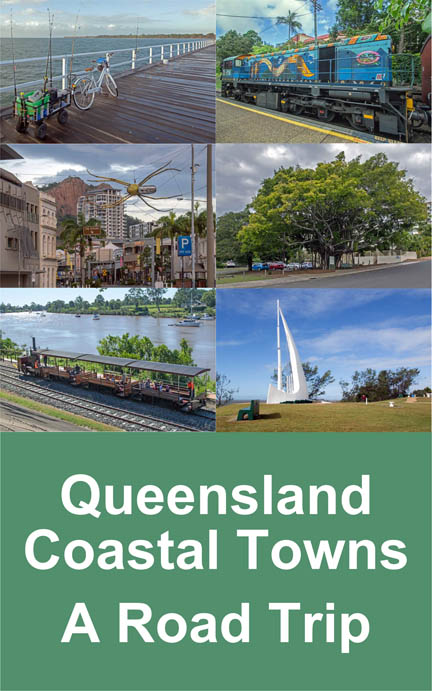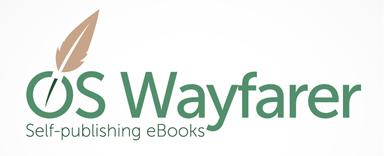eBook Marketing: Introduction
Ensuring we have an effective and sustainable eBook marketing strategy is important to us. In the original iteration of this article, I pointed to our lack of understanding of, poor focus on, and the absence of any plan for, eBook marketing. Subsequently, we have focussed on our eBook marketing strategy and in this article we:
- Propose a framework to discuss eBook marketing
- Identify our updated approach to eBook marketing within each element of this framework
- Indicate what is important to us with our eBook marketing strategy
- Provide a plan to sustainably manage our approach to eBook marketing.
eBook marketing: A framework
Sometime in the distant past, I must have studied a marketing subject because an article by Carol White reminded me of the “4 Ps”: Product, Price, Place and Promotion. I think this is a good framework to look at our eBook marketing approach. The discussion below examines these “4 Ps” as they relate to our situation.
Product
Our product is primarily Travel eBooks. However, we do envisage eBooks about self-publishing and heritage-listed buildings in the future. So far, one of our eBooks is available via print-on-demand (including PDF) and our plan is to make more available in this medium.
What is important:
We consider it is important to:
- keep producing content (i.e. our eBooks)
- maintain the quality of our eBooks
- present our brand through these eBooks (e.g. internal eBook style and cover style)
Price
All our eBooks to date have been priced at US$2.99. This is the lowest price on Amazon that attracts the 70% author payment. We maintain the same price at different sale outlets (e.g. Amazon, Apple iBooks, Kobo, Smashwords etc).
What is important:
We want our eBook price to be competitive and reflect value for money. Our slogan is that – “our eBooks are the same price as a cup of coffee”!
Place
Our eBooks are sold on Amazon and Smashwords. Our only printed book (Six Days in Prague) is sold on Blurb!
Amazon is important as it sells over 60 per cent of eBooks sold worldwide. Quite simply Amazon cannot be ignored.
Smashwords is an important distributor as it provides access to multiple platforms, but importantly Apple iBooks. We also like Smashwords because it accepts the EPUB format.
We have sold an equal number of eBooks on Amazon and Apple iBooks.
Blurb! is our choice for printed books. This is because Blurb!:
- offers Print-on-demand and PDF sales
- access to Amazon and Ingram Spark for printed books
- provides good tools to prepare your PDF book. These tools are ideal for controlling the layout and importing photographs and tables (graphics).
Read about our experience with Blurb!
What is important:
Maintaining broad access to the market (especially Amazon and Apple iBooks); ensuring we have a print-on-demand solution, as well as multiple eBook digital formats, such as – EPUB (Smashwords), Mobi (Amazon) and PDF formats (Generic).

Our eBook: Queensland Coastal Towns – A Road Trip can be found on:
Amazon (Kindle US), Kindle UK, AU Kindle
Smashwords (EPUB), Smashwords also distributes to Oyster, Scribd, Yuzu, Blio and Inktera (formerly Page Foundry) and reaches OverDrive (world’s largest library ebook platform serving 20,000+ libraries), Baker & Taylor Axis 360, Gardners (Askews & Holts and Browns Books for Students), and Odilo (2,100 public libraries in North America, South America and Europe)
Promotion
The important components of our approach to eBook promotion are our website, author pages (i.e. on Amazon and Smashwords), and social media (Twitter, Pinterest, RSS, and Facebook).
The OS Wayfarer website
The OS Wayfarer website is the most important and valuable resource in promoting our eBooks.
The prime reason is that we own and control our independently hosted website. Consequently, we decide what happens on our website. Therefore, we invest most of our time, effort, and money in publishing, operating, and maintaining our website.
By owning and controlling our website it alleviates any concern that an external party could change the platform or its rules of operation. For example, this is something that could happen if we used Facebook exclusively. Periodically, Facebook changes its platform, rules of engagement and algorithms. While this is their right it can cause frustration for Authors and users.
The essential components of our website include:
- Website set-up:
- eBook Information:
- A home-page slider presenting each eBook (OS Wayfarer)
- A WordPress page presenting a synopsis of each eBook’s contents and links to the places where our eBooks can be purchased (g. Athens)
- A callout to one of our eBooks within each post/article (See above “Promotion” in this article)
- In-eBook promotion – information about other eBooks within each eBook (Back material)
- A sustainable blogging platform: Blog posts about our travel photography and self-publishing.
- Email subscriber list: A give away as an inducement to join our email list. Each person that joins our email list receives a free eBook and subsequent notification of each new blog post in their chosen area (e.g. travel or self-publishing) (Walking London’s Regent’s Canal)
- Page structure: Context-aware sidebars which provide links to important resources related to travel, travel photography and self-publishing. Other features include social sharing buttons for each post, social follow-us buttons, a top navigation menu, and breadcrumbs (These features are shown in this planning post).
Therefore, if our website is to be an effective component in our eBook promotion strategy, that we want it to be, the public must know it exists.
We achieve this in two main ways: first, by ensuring our blog posts are discovered when a person is searching the internet (known as Search Engine Optimisation or SEO); and by using social media (especially Twitter) to promote our blog posts.
As mentioned above, we subscribe to the premium version of Yoast SEO. By using this WordPress plugin, we maximise the potential for each blog post to be discovered by the various search engines, especially Google.
Managing and operating a website is a time consuming and somewhat complex area. Hence, we will be devoting a separate post to our website in the coming months.
What is important
The following aspects of our website are important to us:
- Ensuring the website is maintained and kept up to date
- Maintaining our SEO strategy
- Presenting new posts regularly and updating older posts
- Keeping cornerstone pages and eBook pages up to date
Author Pages
We maintain an OS Wayfarer Author page on Amazon and Smashwords. The experts recommend maintaining the author pages on the platforms where your eBooks are for sale, and why not? It is an opportunity to explain who you are, your expertise and experience, and what motivates you to write your eBooks.
Social Media
We struggle to embrace social media; it is not our natural habitat. Twitter is our favourite platform. More recently we have started using Pinterest and returned to Facebook for our videos.
Twitter is our primary social media platform. Each tweet is valuable because it can contain text, website links, and photographs and videos. Twitter is a powerful microblogging platform and we use it to drive traffic towards our website.
We only tweet about an eBook when it is first published. Our tweets mainly promote our blog posts, and every blog post has a call out to one of our eBooks. Also, we retweet other user tweets about our areas of interest, namely: travel, self-publishing, photography and in the future videography.
We have only just started to use Pinterest and so far, we have created OS Wayfarer boards related to our eBooks, travel and self-publishing posts, and photography. Not sure what to make of Pinterest but it appears to be a form of research-library.
After an absence of two years, we have returned to Facebook. We have always struggled with Facebook, for example: why invest time and effort in a platform that you do not own? Why repeat posts that are adequately covered on Twitter? Also, we don’t like their ethics, Exhibit A being the Cambridge Analytica scandal.
Having said all that we are considering using Facebook as a platform to post our short travel videos that support our eBooks and website posts. It is early days, but we want to give it a go.
Despite our misgivings, there is no doubt Facebook is huge in the marketplace.
eBook marketing: Our plan
Our overarching goal is to attract people to our website and then to the places where our eBooks are available to buy. Therefore, our planned actions are all designed to achieve this overarching goal.
Our plan includes:
- Continue to produce new eBooks (minimum one/year)
- Post website articles regularly about travel, self-publishing, and photography (minimum one/month)
- Post videos about travel and buildings (minimum one/month)
- Maintain an up-to-date OS Wayfarer website (we will be writing a more detailed post about our website real soon now)
- Remain active on social media (Twitter, Pinterest, and Facebook – videos)
- Maintain updated About pages on the OS Wayfarer website, Amazon profile and Smashwords profile
Conclusion
Researching and writing this post has shown me that our eBook marketing efforts have not been as bad as I initially thought. Certainly, we lacked an overall framework to anchor our thinking, but we have many of the features of a basic system in place. For example, we have our own website, email list, a blog(s), author pages on Amazon and Smashwords, social media accounts, and an SEO strategy. Also, I now understand how eBook marketing and promotion fit together.
Keep a lookout for our forthcoming article about the OS Wayfarer website.
Do you have any advice for us? Please comment below.
Other Parts of Our eBook Self-publishing Approach
More eBook self-publishing articles
Visits: 615









Leave A Comment